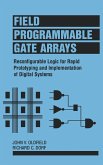Embedded systems applications that are either mission or safety-critical usually entail low- to mid- production volumes, require the rapid development of specific tasks, which are typically computing intensive, and are cost bounded. The adoption of re-configurable FPGAs in such application domains is constrained to the availability of suitable techniques to guarantee the dependability requirements entailed by critical applications.
This book describes the challenges faced by designers when implementing a mission- or safety-critical application using re-configurable FPGAs and it details various techniques to overcome these challenges. In addition to an overview of the key concepts of re-configurable FPGAs, it provides a theoretical description of the failure modes that can cause incorrect operation of re-configurable FPGA-based electronic systems. It also outlines analysis techniques that can be used to forecast such failures and covers the theory behind solutions to mitigate fault effects.
This book also reviews current technologies available for building re-configurable FPGAs, specifically SRAM-based technology and Flash-based technology. For each technology introduced, theoretical concepts presented are applied to real cases. Design techniques and tools are presented to develop critical applications using commercial, off-the-shelf devices, such as Xilinx Virtex FPGAs, and Actel ProASIC FPGAs. Alternative techniques based on radiation hardened FPGAs, such as Xilinx SIRF and Atmel ATF280 are also presented.
This book is an invaluable reference for anyone interested in understanding the technologies of re-configurable FPGAs, as well as designers developing critical applications based on these technologies.
This book describes the challenges faced by designers when implementing a mission- or safety-critical application using re-configurable FPGAs and it details various techniques to overcome these challenges. In addition to an overview of the key concepts of re-configurable FPGAs, it provides a theoretical description of the failure modes that can cause incorrect operation of re-configurable FPGA-based electronic systems. It also outlines analysis techniques that can be used to forecast such failures and covers the theory behind solutions to mitigate fault effects.
This book also reviews current technologies available for building re-configurable FPGAs, specifically SRAM-based technology and Flash-based technology. For each technology introduced, theoretical concepts presented are applied to real cases. Design techniques and tools are presented to develop critical applications using commercial, off-the-shelf devices, such as Xilinx Virtex FPGAs, and Actel ProASIC FPGAs. Alternative techniques based on radiation hardened FPGAs, such as Xilinx SIRF and Atmel ATF280 are also presented.
This book is an invaluable reference for anyone interested in understanding the technologies of re-configurable FPGAs, as well as designers developing critical applications based on these technologies.








